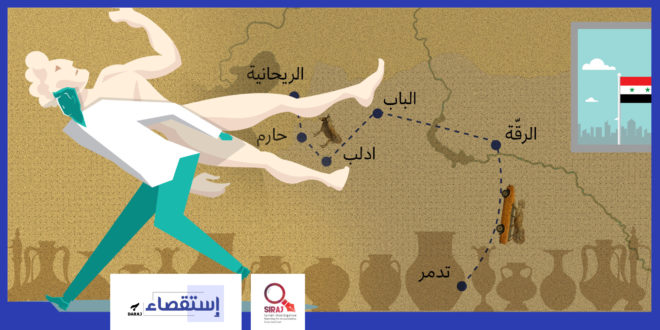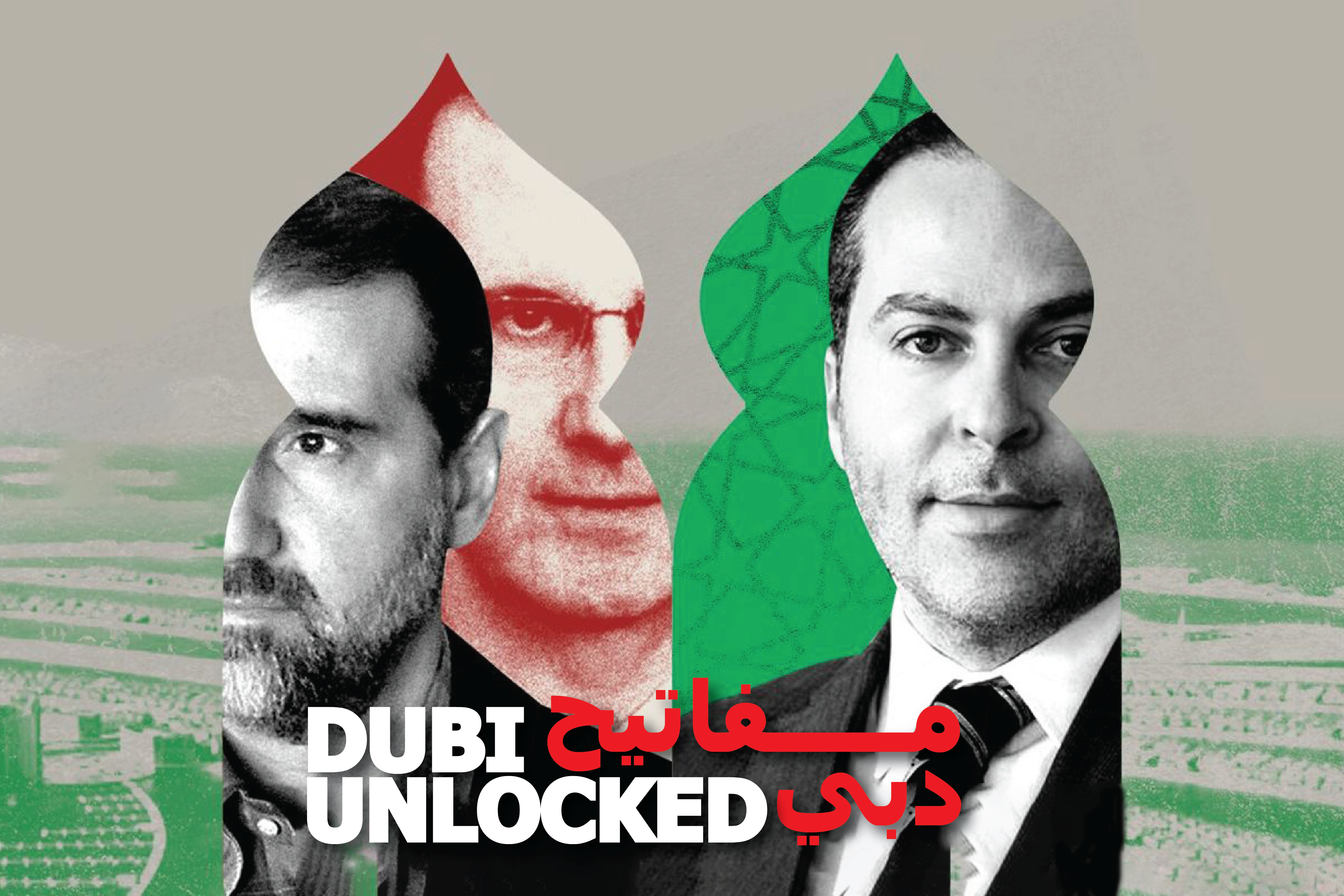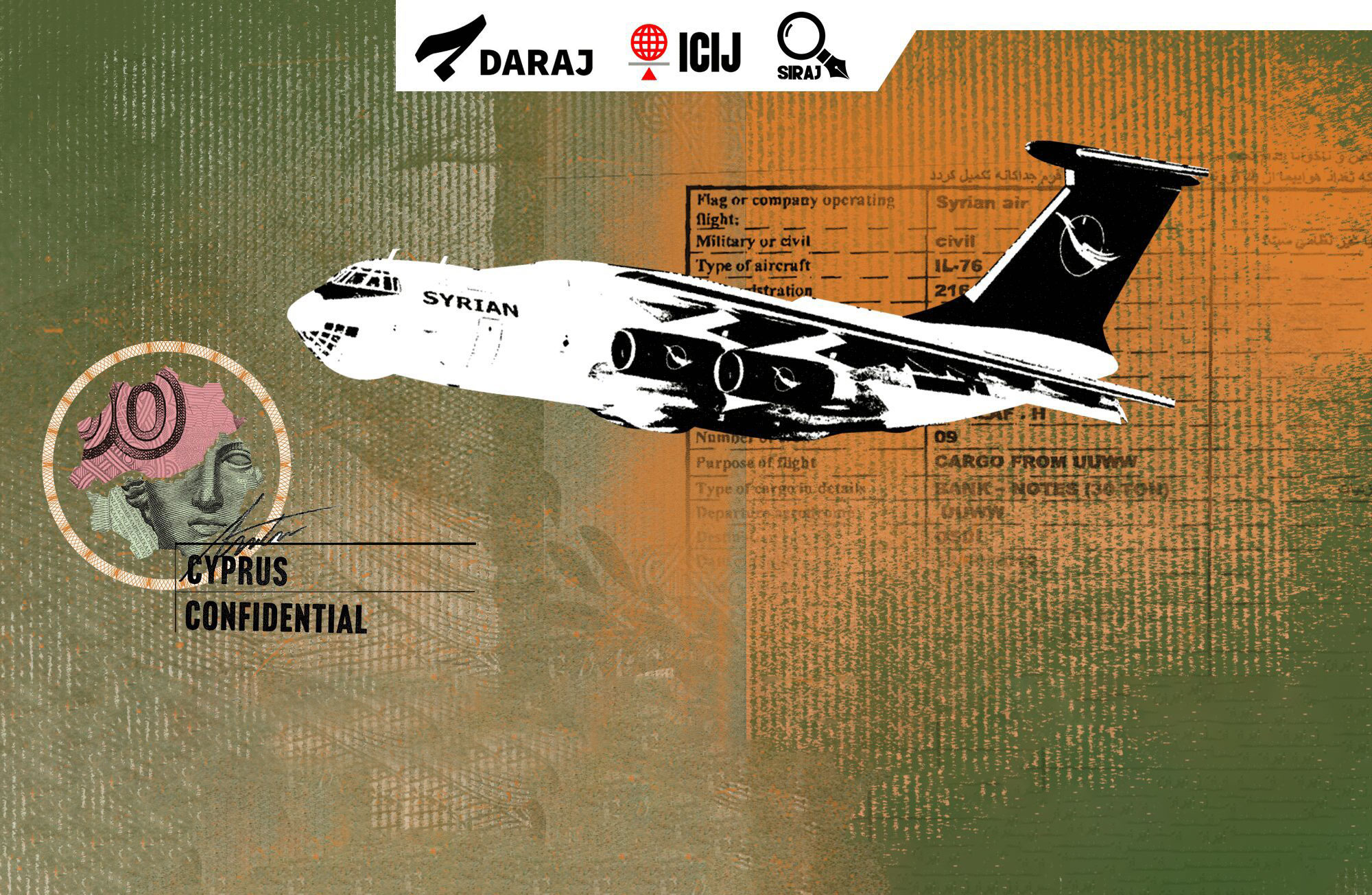Daham Al Asaad – Istanbul
Two kilometers of the Turkish-Syrian border, Yusuf entered into an old house located at Reyhanlı suburbs – south of Turkey, opened carefully a brown big canvas bag and take out slowly a heavy stone inside it to avoid breaking it.
When he lifts the stone, I saw a human portrait was carved carefully on a white stone, with big eyes, beard and curly hair’s head.
After the man removed the bag fully, an athletic naked body was appeared of pure marble, standing leaning on a column covered with the skin of a dead lion.
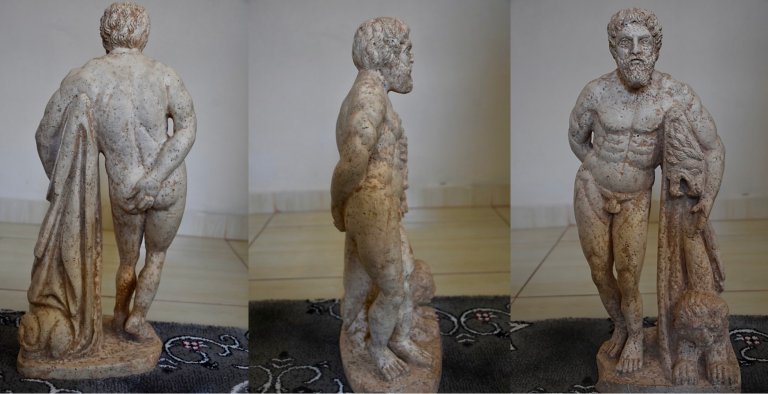
“What a beautiful statue!” Yusuf said with a smile while staring on it, it is from Syria with a half meter height, made of greenish stone, “it will change my life and make me a rich person “as Yusuf said to the investigator.
That just has entered from Syria by Yusuf , hoping to make him rich , this is what motivate us to search more against the backgrounds of transferring, smuggling of Syrian archaeology and selling it, especially after spread of excavation & illegal trade inside the country, and Crossing borders to neighboring countries, which has accompanied the war-years since 8 years, thus the Syrian bleeding was not limited to immigration of millions people from the country but exceeded it to smuggling stones (archaeology).
The smuggled archeology trading networks are getting benefit by selling ,purchasing and smuggling it to the neighboring countries, which include multiple parties of normal citizens, brokers & traders , who were founded by a virtual environment-Social Media for trading of such goods by advertising and selling it.
Four months of tracking, a team of journalists in this investigation has detected the way of merchandising the Syrian smuggled archaeology by using Social Media to create a demand on such goods, as Yusuf did, and to support selling operations, where you can find who sells the archaeology pieces and who interested of purchasing it.
And you can find details of the exhibited pieces, price list, delivery method and others, and what led us to achieve this investigation to know how they are trafficking of such archaeology? Who buy them? Where can you find their last place?
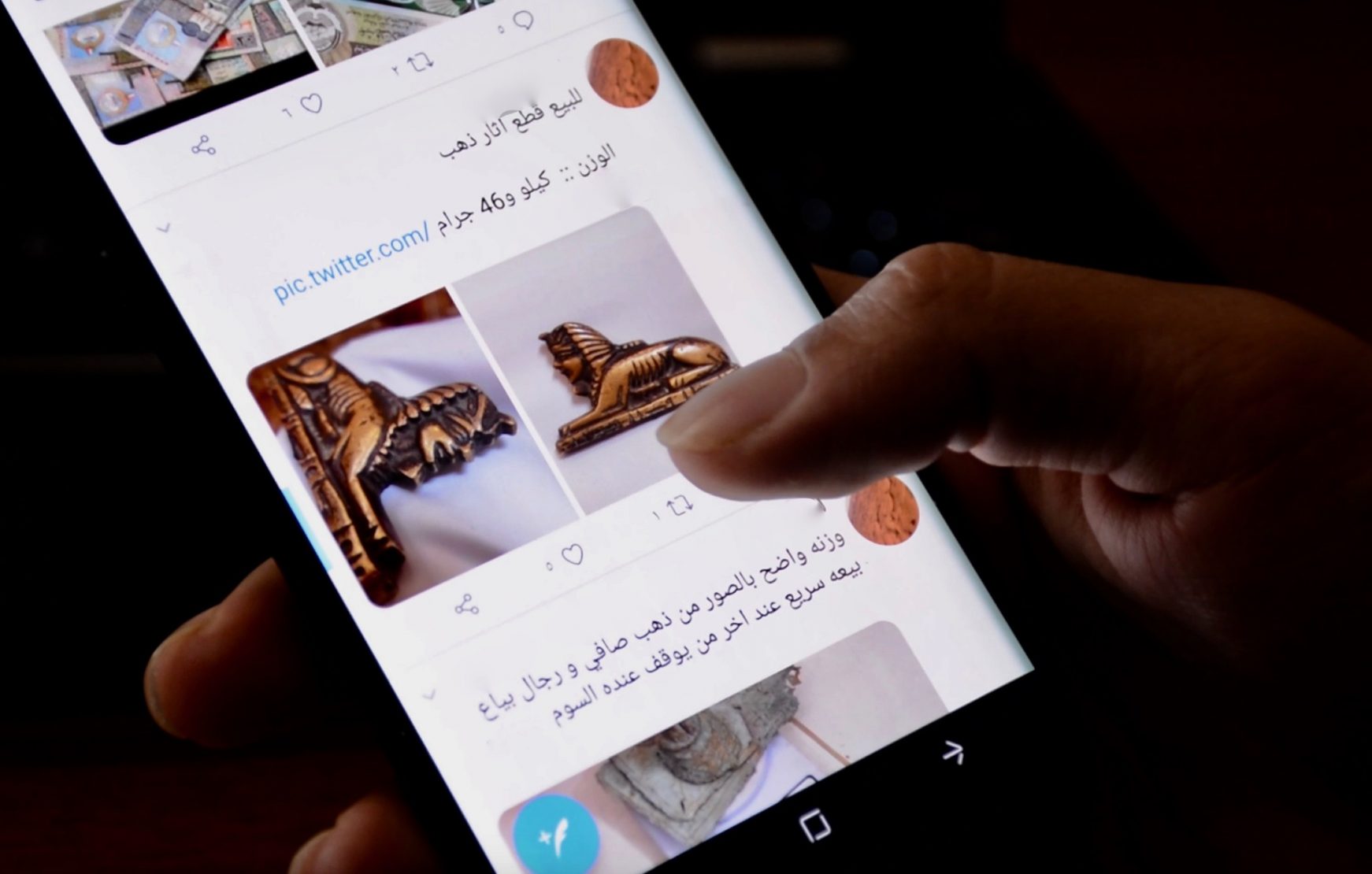
No official statistics for the amount of smuggled & stole Syrian archaeology in the last few years, or which crossed the border by smugglers, mediators and border’ traders, the international “UNICCO” organization’s estimates are considered the illegal trading of the cultural properties from Syria & Iraq are one of the main income resources for organized crime (its income estimated between 7 & 15 billion dollar yearly).
On 13 February 2019, the Turkish police announced seizure of four – “priceless” old books, were written by the Syriac & Aramiac language included a book depicts the life of Jesus Christ, and the police think the books may were smuggled from Syria museums, but after examining the books later has showed no stamps on it refer to its registration, and some parts of the books were torn, that mean it was containing museum archive’s numbers which was stolen from.
Before that /168/ of Syrian smuggled archaeology pieces were seizure by the authorities, dating back to Roman, Byzantine and Ottoman era at Gaziantep province.
The Federal Bureau of Investigation (FBI) issued a warning in 2015 against the background of growth the Syrian archaeology trading due to the conflict, and referred that Syrian stolen archaeology are sold in the European black markets.
Thus an alternatives were found, most of selling archaeology & antiques’ transactions are currently done by limited networks or by Social Media including Facebook, instant messaging by using WhatsApp and Telegram apps.
eBay website is showing pictures for Syrian originally antiques with different prices, and by technology the network reaches to potential purchasers with more security and anonymity, what is proven by this investigation.
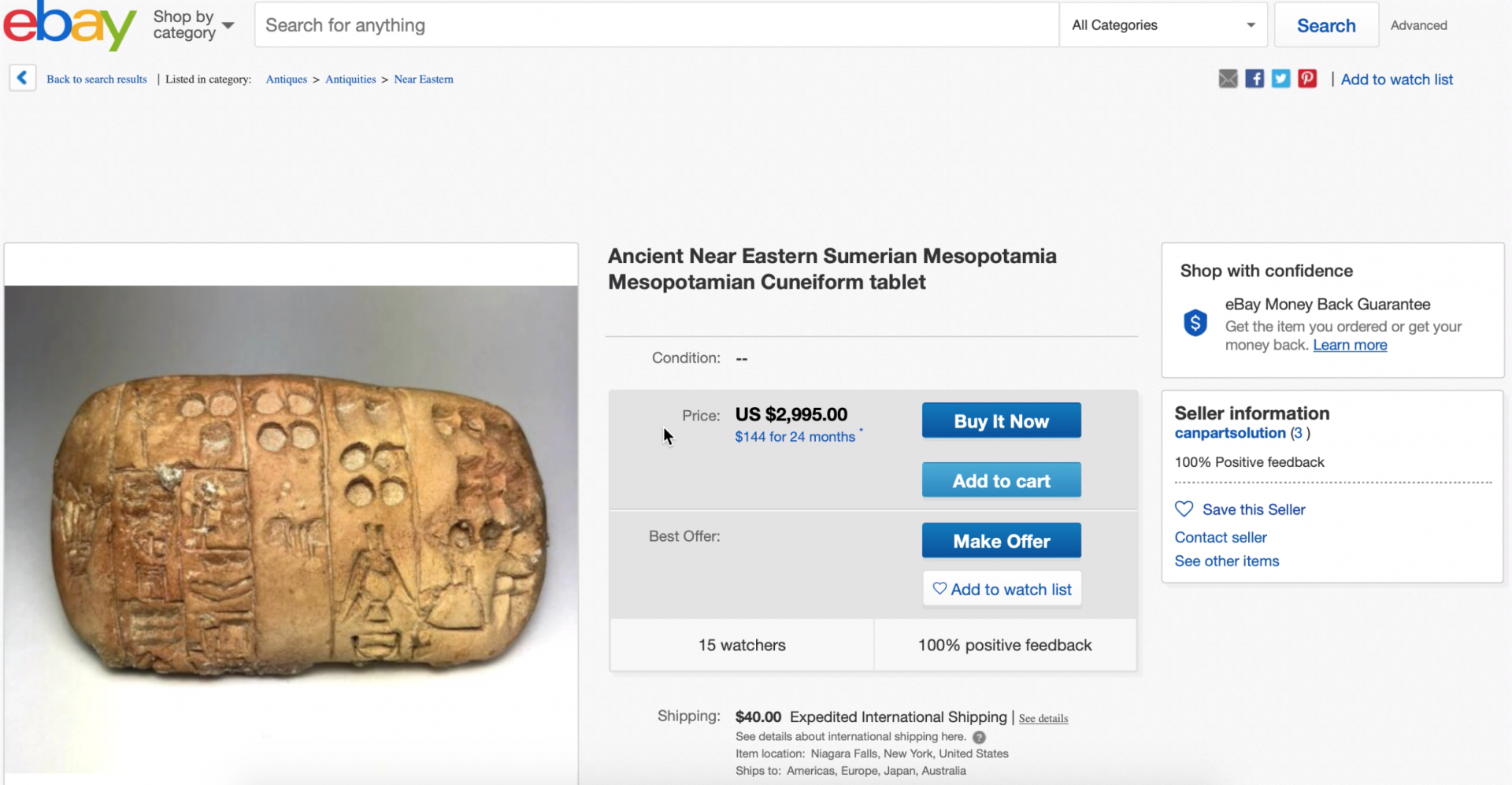
“The most famous areas for smuggling the archaeology to the neighboring countries & world are the big archaeological areas, like Palmyra city (2100 B.C), Afamia city – Hama countryside (300 B.C).Forgotten Cities in Idleb like: Sergila, Bara and citadel of Samaan which it’s dating back to Byzantine era.” According to Ex-Director of Archeology and Museums in Al-raqqa city, Prof. Anas Al-khabour, who worked in Alraqqa city between2003-2008 and living in Sweden currently, professor in Gothenburg University, Specialist in the cultural threatened heritage in conflicts areas like Syria & Iraq.
Where do the archaeologies come from?
Yusuf -35 years old, with a big body & light beard on his corny face, was exhibiting some archeological pieces like: Golden currencies & Romanian glass bottles on his “Facebook” page, with fake name.
The investigator communicated with him and asked to meet, he thought we are traders want to buy what he have for the first time , then we had introduced our self as journalists, after a while, he accepted to meet us at café in Antioch border city with Syria.
The young man who is trading in selling of small archaeological pieces like: Romanian coins currencies or gold ornaments, adding to glass – manufactured bottles was hiding in close apartment a statue to “Hercules” got it out of Palmyra city, after he had found it with his cousin at one of the farms in the archaeological area.
“Hercules” is famous as a hero with a super power, and he is son of the famous Greek goddess “Zeus” which represents as an iconic of western arts, literature & popular culture at the Greece and the Romans, and his existence in Palmyra city not a coincidence because of the city dating back to Greece & Romanian era and it is an extension of it in year of 282 AD.
“When I stared at the clay covered- statue for the first time, I thought that I will become a rich, so I exhibited it to traders, but I was chocked because they didn’t pay me the required sum” as Yusuf says.
Yusuf wants against the statue an amount for/ $100.000/ one hundred thousand dollars (equals to 55 Fifty–Five million Syrian pounds), He explains in a faint voice after he lit a cigarette and said “In Syria the traders exploit us”.
The international UNESCO organization is estimates the volume of this trade between Syria, Iraq & the world to 7 -15 billion dollars.
The most profit works
The sculptures , statues, miniatures , cuneiform tablets, clay / pottery boards, currencies and old Mosaic panels, which dating back to previous civilizations lived in Syrian lands since thousands years are the most important things for this trade ,shown by social media pages , and what are revealed by the brokers & traders who were met by the investigator.
Persons & networks ensure transferring collectibles by smuggling it to neighboring countries then selling it to third parties or keeping it until obtaining the required price which estimates of thousands dollars.
At the border area, Syrian pieces dating back to an old civilizations & kingdoms alongside Euphrates River are offered to sale, it is one of the oldest world civilizations, like: Mary’s Archaeological City which flourished in the third millennium B.C, Dura Europos (300 B.C) and Syrian coast areas like Ugarit (6000 B.C).
“Most of the smuggled archaeology is come from areas outside the control of Syrian regime, where archaeology excavation’s operation & looting of archaeological sites were done” According to Al-khabour’s survey.
He clarifies that” The excavation operations are going in advance – known sites, where the archaeological missions had worked in, in addition to undiscovered sites like Archaeological hills, and there are also many public markets for stolen archaeology inside Syria”.
Ghawzangh Shu, Implementation and Facilitation Director in the world customs organization (WCO) said at Paris International Conference of 2014, which is discussing” the Heritage and cultural diversity’s that both are endangered in Iraq & Syria”, “Looting the cultural properties is one of the oldest organized crimes across the border, and today became widespread phenomenon all over the world, smuggling the cultural heritage still forms a catastrophe hits the countries’ heritage across the world.
Yearly, thousands of ِArchaeological pieces disappear from the museums ,churches, private groups and public foundations, starting from old weapons down to the paintings, currencies, watches, religious antiques, archaeological pieces and cultural heritage , all of them exposed to steal”.
“Most of the smuggled archaeology is come from areas outside the control of Syrian regime, where archeology excavation’s operation & looting of archaeological sites were done”.
“The clear relation between this kind of crime, tax evasion & money laundry has confirmed, and no one can estimate the profits from the looted, stole or smuggled artworks reliably, but experts agree that it represents one of the largest illegal world companies which value reaches to billion dollars and that seduces the organized crime” , according to Shu.
Marketing the looted pieces
To become a rich person is aim of every person working in this trade and isn’t enough finding the archaeological pieces after illegal excavation, but there is also selling or transferring it outside Syrian- border, what exactly Yusuf did when he had found Hercules statue.”We had communicated with a smuggler in Idleb, then we entered the statue on a donkey back, because it is heavy I can’t run while I am lifting It.” as the man explained us the operation.
Yusuf described us this operation inside the house we have met, indicating from the room mountain -view’s window to a mountain road which you can see it directly by eyes through the window” from over there I entered, I paid one thousand dollars (equals to 550 thousand Syrian pounds) for a smuggler”.
The Statue’s trip
Yusuf moved the statue from Palmyra city to Raqqa by a car at the beginning of 2107, the city was then under “Isis” organization’s control.
Then he moved the statue by a car to Al-bab city – northern Aleppo countryside, which it was under Isis control also then moved later to Idleb which was under Factions of the Free Army’ control, finally settled down in Harem city at Syrian –Turkish border.
This transferring operation indicates to Isis’ control on the Syrian cities, which is facilitated the excavation operations & archaeology’s illegal trade from the transferring operation down to ability of offer & sale it.
“Isis’ organization was giving excavation permissions by Alrekkaz /Ore Office – the responsible of what are under the land from oil or archaeology, against of taking 20% of the found pieces’ value” as Yusf says.
According to Al Khabour, Yusuf and others who we have met in this investigation, thus the archaeology markets are outside Syria border at the neighboring countries such as: Turkey, Lebanon, Iraq & Jordan.
Gulf’s big Traders
Archaeology traders are communicating with each other usually at south of Turkey by communication apps & instant conversations through internet network, thus they are following-up the archaeology smuggling operations which include: Archaeological stone pieces, gold & metal pieces.
Isaac and Juma are “small” Syrian traders as they are saying, because they think that “there are rankings for trade, starting from the archaeological pieces’ owner then the brokers’ role down to the “whale”- the man who buys everything”.
The situation in Syria motivated the illegal archaeology’s trade, and the local people started to excavate for antiques & treasures due to lacking of resources & poverty, as happened with Juma & Isaac who are getting benefit from social media and the development of technology in the selling, buying, demand and offer.
Issac asserts that social media made the work much easier, he doesn’t need any more to travel from Gaziantep to Şanlıurfa – the border cities with Syria for instance.
To see the archaeological entered pieces from Syria, he only asks the piece’s owner to photograph, write his name and the date beside the archaeological piece, to make sure of its authenticity & existence, he informs who need it, after that will be examined by an experts, and finally the purchasing operation will be done.
“The archaeological pieces are sold a lot to Arabian Gulf merchants who buy archaeology & gold, paying big sums which sometime exceed to million dollars, and they are using transfers at the black markets to prevent detection the big transferred sums.” as Issac says.
Issac allowed us going with him to know his handling way with other traders, so we went to his friend Juma house beside Turkish Gaziantep city.
Juma prefers to come at night “it is more safety” and he clarified that by a phone call to Isaac “To avoid any trouble” upon his opinion.
Juma opened the door, due to issac’s loud voice calling him.
Juma-30 years old, with a pale brown face & slim body sounds very afraid of working in such field, “If his order were revealed, he will spend the rest of his life in prisons”, as he says.
At his poor house, he saying “we are talking with you due to existing many big mafias who steal the sculptures & massive archaeology, but for us as poor people we are working in simple things just to live in this country, where everything is few for us”.
Directly the talk about Juma’s archaeological pieces began between Isaac & juma for their prices, quantity, where are the rest of the pieces? And where they are come from? , He informed him all the details.
Juma has Romanian metal currencies, the value of each piece for $300-500 (equals to 165 – 275 thousands Syrian pound), the total of them /150/ metal pieces still in Syria,” all of them found during excavation at north of Manbig city, and to bring them to Turkey are very easy in case of paying a good sum” as he says.
A Popular trade
Omar Glick, the Turkish Minister of Culture & Tourism talked about his ministry’s policy to prevent entering the Syrian cultural heritage to Turkey.
And he talked about the big development in smuggling of the Syrian cultural things across the Turkish border since beginning of the Syrian war in 2011, but the government is seeking to limit the smuggling operations across its border and inside its lands.
According to Turkish act No.2863of 1973, to transfer or smuggle archaeology are punished by aggravated imprisonment & seizure, lately were arrested smugglers & Syrian archaeology’s traders, according to News agencies & Turkish media.
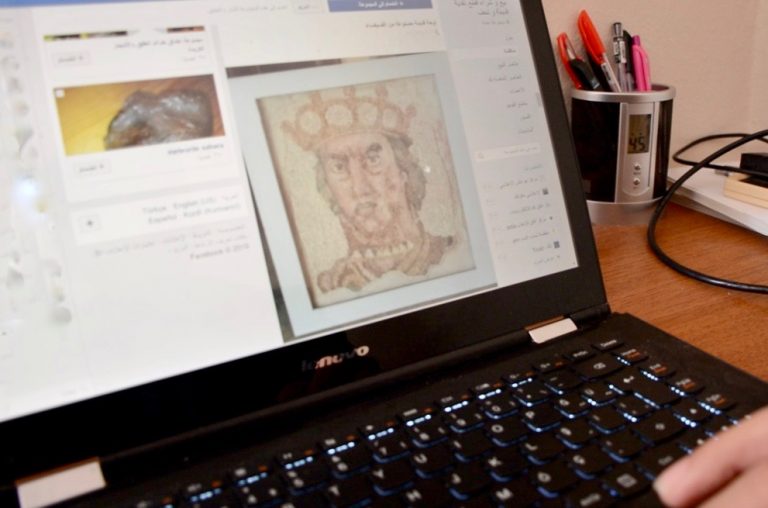
Is this archaeology real?
We tried to make sure of Yusuf’s statue authenticity, and the truth of other archaeological Collectibles’ pictures, thus we sent the statue’s picture after their permission to Stefan Lund -Swedish archaeologist, specialist Prof. in Middle East archaeology – Gothenburg University & Sweden international researches center.
Prof. asserted the statue’s authenticity, and it is a priceless statue in Europe and costs a lot of money, and he says “It is Hercules statue with distinguished lion skin dating back to the Greek- Hellenistic era”.
Prof. Lund’s asserts of the statue’s authenticity & importance are repeated by another archaeologist, who was working as a previous head of an archaeological mission in Syria before 2011, and right now is working as a Prof. in the Middle East archaeology’s Department -European university, refused mentioning his name for legal reasons relate in his work And to prevent him from appraising the archaeology at the black market.
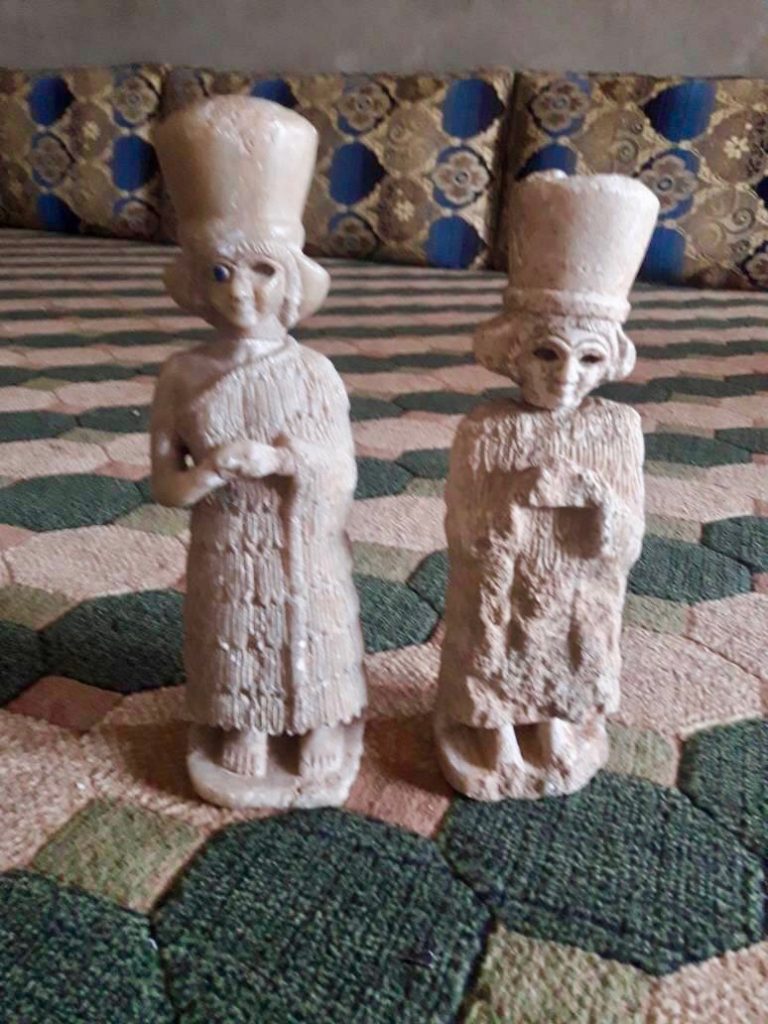
We showed him the statue & other archaeological pieces’ pictures from social media and black market in Turkey, they are (Boy head, Hercules marble statue, two small marble statues and all of them dating back to Hellenistic – Greek era), his answer by E-mail on 19 last March to the investigator was:” clearly some of the pieces from Palmyra city, of the art style side, and some contain Aramaic inscriptions can be identified easily, thus no doubt of its origin from Palmyra and Roman era”.
According to Prof. these archaeological pieces are:” popular to some extent in eastern Mediterranean Regions ,including Syria and mosaic paintings dating back to Hellenistic-Greek era can be found in the rich excavated private houses in eastern Mediterranean , and the pieces are authentic certainly”.
Transit Countries
“Turkey & Syria’s neighbors are “Transit” countries, because the last market for this archaeology is Europe, where they are sold in auctions or in the old arts antiques shops”.
According to Al-khabour, who has a deep knowledge in Syria’s archaeological heritage and cooperated UNESCO organization in Syrian archaeology protection matter.
He says:”London market is an attractive for these archaeological pieces, especially the smuggled one”, adding:”in the European market there are big demand for archaeology, and this place is the best market for selling these pieces with big sums”.
These archaeological pieces are ” popular to some extent in eastern Mediterranean Regions ,including Syria and mosaic paintings dating back to Hellenistic-Greek era can be found in the rich excavated private houses in eastern Mediterranean , and the pieces are authentic certainly”.
Forging certificates of Origin
We tried to search & make sure of Khabour’s words, if these markets are attractive for smuggled & looted Syrian pieces or whether they are the last place for them.
Communicating with smugglers, brokers or even who work in this field is very difficult, due its danger, where our both attempts with two merchants failed after we had communicated them by “social media”, then we tried again with one of the merchants & brokers in Europe and no one accepted to talk even.
Georgin 50 – years old is trading of both Chinese & Egyptian archaeological pieces, living in Germany – France from Denmark originally.
We talked with him as an archaeological pieces’ owners who have archaeological pieces for sale not as journalists, thus he accepted to meet us after he had asked for pictures.
He met us in his car at one of the European capitals “what is the archaeological showed piece for sale?”He asked directly after our arrival, so I gave him Hercules statue picture.
While he was staring at statue’s pictures put his eye glasses on and asked” Are there any documents for the statue?”,”No” We answered , then he asked “Does it exist in Europe?
“No” I answered, “it is in Turkey “, and He said “We will talk if the statue arrives to Europe”.
The intended documents by Georgin’s question are like a passport known as “certificate of origin” should be available with any sold & traded piece legally.
Because maybe the statue was at one of the art pieces auctions, and there are documents for the statue’s buying -selling before, or was owned by known family in the world and have old pictures for the statue in their houses.
He explained for us the necessity of the smuggled archaeological pieces’ documents to trade it legally, by forging their related origin certificates, thus they become ready for legal trading, then to show them in The International Auctions Houses for sale with fancy prices.
This is one of the methods which the looted Syrian archaeological antiques-finds find their way to the international markets, auctions and show houses across the world and avoiding the seizure & governmental control.
“It is an organized old networks flourished in Iraq since 2003, during American invasion then in Syria after the occurred problems”. As Khabour commented on the above mentioned merchant’s words.
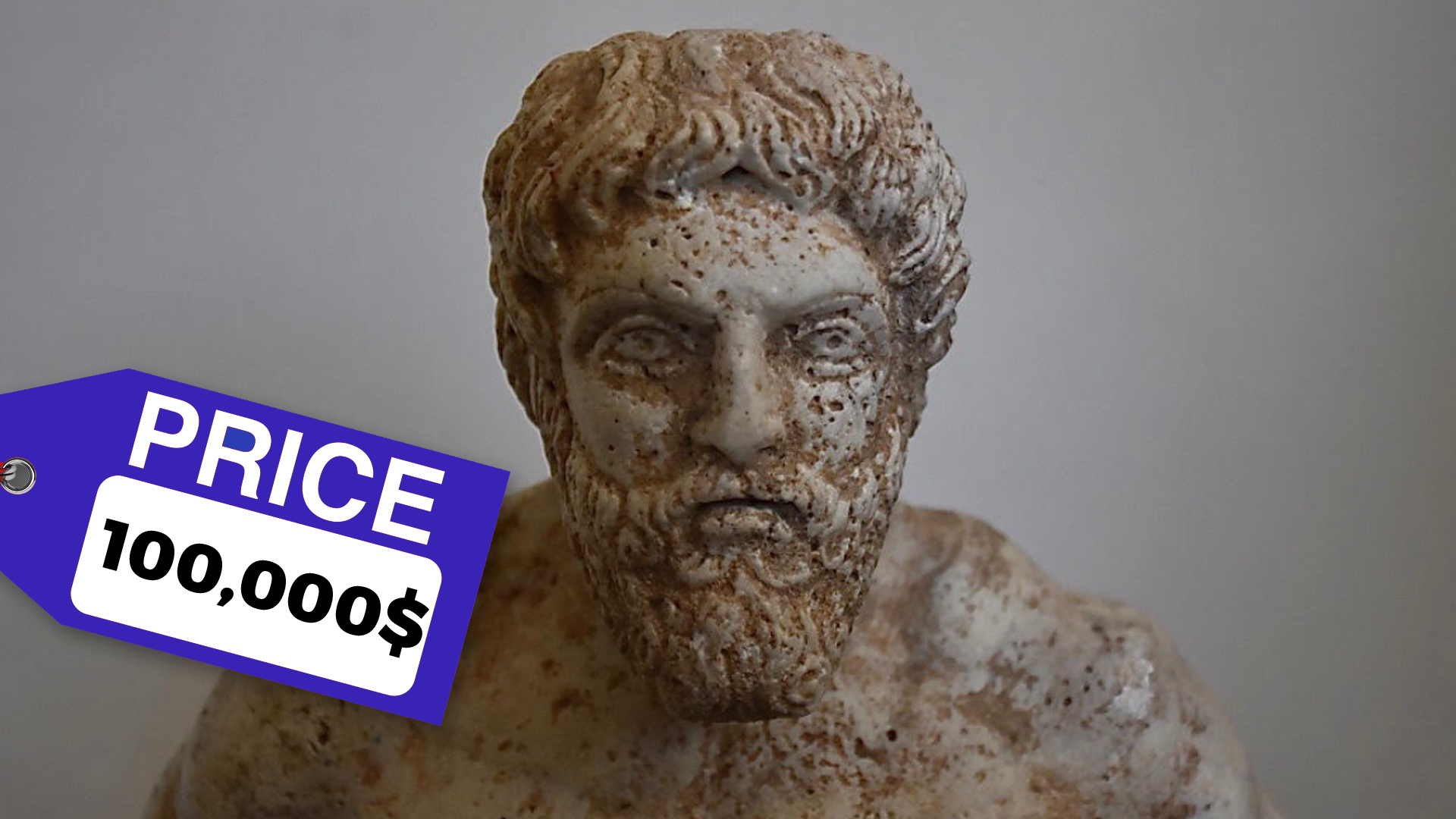
Supply market to Europe
The main information’s memo – Annex No.6, issued from UNESCO in 2014 – “Preservation of heritage and cultural diversity is a humanitarian and security necessity in the light of the conflicts of the twenty-first century”, which indicates to:” the smuggling feeds the illegal trade’s system of the cultural properties, one of the main incomes for the organized crime (estimates between 7 -15 billion dollars yearly).
The trade methods exceed the neighboring countries like Lebanon, Turkey & United Arab Emirates to supply the art pieces’ markets in the United Kingdom, Switzerland & United State of America between other markets.
It is a global scourge that can only be combated at the international level, by cooperate of the governmental agencies like: Customs & Police Departments and the interested parties in art market, including auctions houses, museums and amateur of archaeological things collecting”.
The red –list & Interpol
Some of the European states are trying to enact new laws to limit the looted archaeology trading of the in conflicts- states like Syria, due to the link of this file with financing terrorism and extremist groups such as “Isis” organization for instance.
These efforts come right now after in the past were allowed to sell archaeological pieces which had reached to Europe, according to Khabour.
This situation has been continued until 2016, where the Germany government initiated to limit this trade through providing that submitting an identification document with each piece or proof that it belongs to an important persons, and then will be allowed to sell or show it.
Each piece doesn’t accomplish these conditions will be considered smuggled & from illegal source, as khabour indicated.
There are other efforts are leading by organizations like International Council of Museums “ICOM” that responsible of the world museums.
The investigator communicated with the museum administration in order to know the shapes & pictures of the looted smuggled Syrian archaeology.
Some of the European states are trying to enact new laws to limit the looted archaeology trading of the in conflicts- states like Syria, due to the link of this file with financing terrorism and extremist groups such as “Isis” organization for instance.
The administration asserted that a guide under title of “Red emergency list of the threatened Syrian cultural properties” that issued, printed in 2013 & distributed to the international police “Interpol in order to identify the Syrian archaeological pieces, to help art professionals, heritage specialists & law enforcement officials to identify the looted Syrian archaeological pieces which be traded in the International Art Market”.
The guide contains pictures & shapes of archaeological pieces and chronology in order to identify them, intercept and confiscate them providing that delivering them to the country of origin, and these pieces should be registered & numbered at the country of origin, and information’s intersection with Interpol to facilitate the process of intercepting, controlling and to limit trading of them.
“UNESCO” role as an international organization to document, preserve the material & cultural heritage for peoples, but it refused to communicate with us despite of sending questions by e-mail to its office on last 25 March without any respond, thus “UNESCO ” role limited on activities which concentrate on accomplishing harmony between the initiatives and multi solutions regarding archaeology trading as Khabour describes it.
Yusuf impatiently waiting who buy Hercules statue and don’t care if the statue has later an authentic or forged certificate of origin, but only cares of selling it with good price and he says who buy the statue should transfer it in any way they want, clarifying that: ” a German man was paid $55 thousand dollars for the statue, but I did not sell”, according to him.
Adding,”I will keep the statue with me until obtaining of the best price”.
Yusuf returned back Hercules statue to the canvas bag, tied it tightly by a metal tape, holding it as baby between his arms and left the room saying with a shy smile while staring to the bag:”Hercules, you will not see the sun until a well-paid customer comes and appreciates your value”.
*This investigative story was completed by Syrian Investigative Reporting for Accountability Journalism – (SIRAJ), With the contribution of Adnan Al Hussein – Ali Al Ibrahim. Published on DARAJ.
